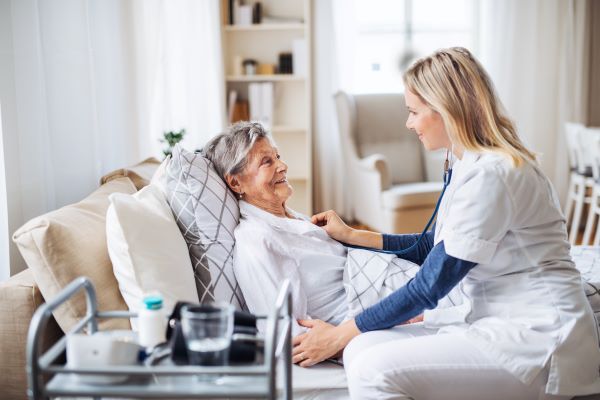The growing elderly population 65 and older is adding additional pressure on the US health care system which is already experiencing a shortage of doctors, nurses, and caregivers. The surge in baby boomer seniors and near-seniors has put a focus on Telehealth and mHealth technology platforms which provide solutions that improve senior care monitoring, coordination, and management while aging in place. Telehealth is the distribution of health-related services and information by way of electronic information and telecommunication technologies while mHealth is its mobile counterpart. Both platforms allow long-distance patient/clinician contact and care, advice, reminders, education, intervention, monitoring, and remote admissions. The benefits of these technologies are particularly significant for seniors living in rural areas where medical facilities can be far from home.
According to two statistics reported by AARP, there will be an increase of about 7 percent of the senior population who by 2050 will require additional caregiving and support due to chronic disease. The study also cites, “The number of people 65 and older in the United States is expected to increase to 55 million in 2020; to some 70 million by 2030, and 88.5 million, or 20 percent of the population by 2050. (Put yet another way, between 2006 and 2030, the U.S. population of adults aged 65+ will nearly double from 37 million to 71.5 million people.)” These statistics highlight the need for medical home-based technology because aging in place has become a ‘movement’ and is the best hope to meet the increasing senior demographic in the United States.
These medical technology platforms require reliable and robust internet connectivity which are readily available in urban and suburban areas but can be a challenge to provide in rural locations. It is possible to meet the need for internet availability in much the same way that the US created the Rural Electrification Act (REA) of 1936. The REA US-backed federal loans provided for installation and electric distribution systems to serve isolated rural areas. Today, the funding mechanism for remote internet service provisions can be similarly funded and does not require a point to point wiring but rather wireless cellular towers. Additionally, assessing the amount of federal money paid out for 911 calls for seniors who wind up in the hospital after a fall could provide savings that could be redirected to a rural internet provisional act. Statistics show that over three months the average medical cost incurred by each accidental senior fall is about $35,000. The National Council on Aging (NCOA) reports that falls account for more than 2.8 million injuries treated in emergency departments annually and the number of hospitalizations is over 800,000. Multiplying $35,000 by 800,000 hospitalizations is $28 billion annually. Even a portion of that dollar amount would go a long way to helping rural seniors get reliable, affordable internet access.
Telehealth and mHealth platforms are integral to the success of aging Americans. All of the technology tools like laptops, remote control devices, and voice-activated personal assistants are also reliant on reliable internet connectivity. The integration of all of these tools to provide a quick link to a senior’s care team, whether that is their primary care physician, home health aide, wearable medical devices, family member, or the neighbor next door is essential in the prevention of hospitalizations. The money that can potentially be saved has prompted the Centers for Medicare and Medicaid Services (CMS) and the American Medical Association (AMA) to expand reimbursement policy for remote patient monitoring programs through new Current Procedural Technology (CPT) codes.
These remote monitoring medical platforms are readily available to put in place and become mainstream solutions to the aging US demographic. For those seniors who can age in place, these technologies are invaluable. The same monitoring tools can also reduce strain on doctors, nurses, and care staff at retirement communities, senior living facilities, long-term care centers, and skilled nursing facilities. Mobile carts, video communication links, and connected devices at a facility can connect remotely with a doctor or specialist reducing the need for emergency medical services (EMS) or transport to a hospital.
Telehealth and mHealth technology can create a medical care platform for seniors that enable them to live safely and comfortably at home. We help seniors and their families create comprehensive plans that cover long-term care needs, how to pay for care, and how to choose appropriate people to help seniors make important decisions. If you have questions or would like to discuss your personal situation, please don’t hesitate to reach out. Contact our Albuquerque office at (505) 830-0202. We would welcome the opportunity to help you and your loved ones.

